Steel Products Prices North America

Raw Materials Prices: Iron Ore, Coking Coal, Pig Iron, Scrap, Zinc
Written by Brett Linton
September 2, 2021
Prices for four of the seven steelmaking raw materials tracked in this SMU analysis decreased over the last 30 days. Through Sept. 1st, iron ore prices stumbled 18% in one month’s time, pig iron prices fell 11%, shredded scrap prices declined 4%, and zinc prices decreased 2%. Busheling scrap prices remained flat month over month, while aluminum prices rose 3% and coking coal prices increased 13%.
Table 1 summarizes the price changes of the seven materials considered in this analysis. It reports the month/month, three months/three months, and year/year changes as a percentage.
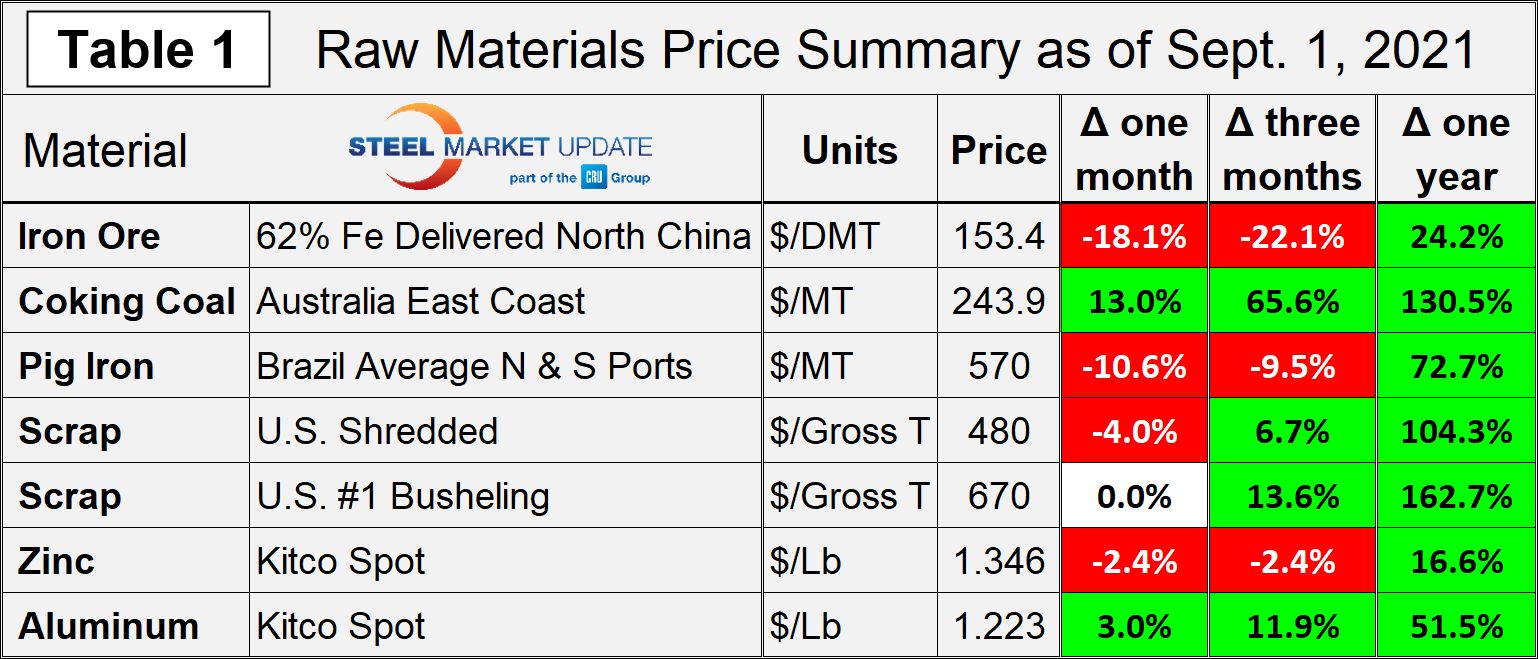
Iron Ore
The Chinese import price of 62% Fe content iron ore fines had been moving upward for over a year, from May 2020 through July 2021, but began to slide earlier this month. Figure 1 shows the price of 62% Fe delivered North China, up over last week to $153.4/dmt as of Sept. 1. Iron ore prices have fallen 18% in the last 30 days, down 22% compared to three months ago. A recent CRU report noted, “Iron ore prices have bounced back in the past week as steel prices have increased and margins have improved somewhat, bringing rebar producers back to profit-making territory”.
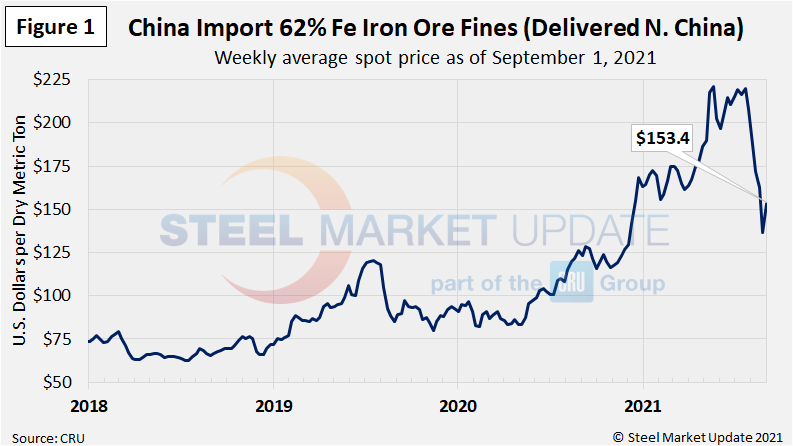
Coking Coal
The price of premium low volatile coking coal FOB east coast of Australia has surged over the last three months, surpassing the 2020 high in June and reaching $243.9 per dry metric ton as of Sept. 1 (Figure 2). The last time coking coal prices were this high was in January 2018. Although up over 2020 levels, recall that recent coking coal prices are just now approaching levels seen from approximately 2017 to mid-2019.
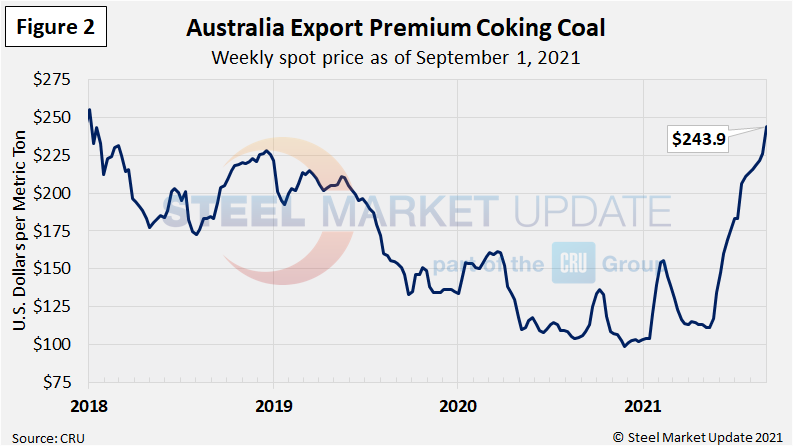
Pig Iron
Most of the pig iron imported to the U.S. currently comes from Russia, Ukraine, and Brazil. This report summarizes prices out of Brazil and averages the FOB value from the north and south ports. The latest data shows the pig iron price has declined from the June/July high, averaging $570 per metric ton in August. Pig iron prices have remained historically high for the past nine months and are up 73% from levels one year ago. Pig iron prices reached a low of $275 per metric ton in May 2020, with prices increasing each month thereafter through January 2021 (Figure 3).
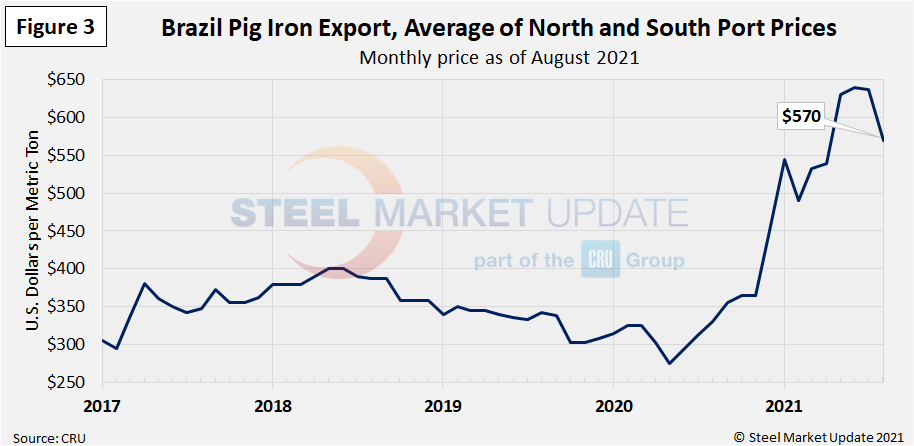
Scrap
Hot rolled steel prices fluctuate up and down with the price the mills must pay for their raw materials. Changes in the relationship between scrap and iron ore prices offer insights into the competitiveness of integrated mills, whose primary feedstock is iron ore, versus the minimills, whose primary feedstock is scrap. Figure 4 shows the spread between shredded and busheling scrap, both priced in dollars per gross ton in the Great Lakes region. August scrap prices remain at historically high levels, up 6-14% compared to three months prior and 104-163% higher than prices one year ago. Prior to 2021, the previous record for scrap prices over the last decade was $510 per ton for busheling in December 2011 and $473 per ton for shredded in February 2012.
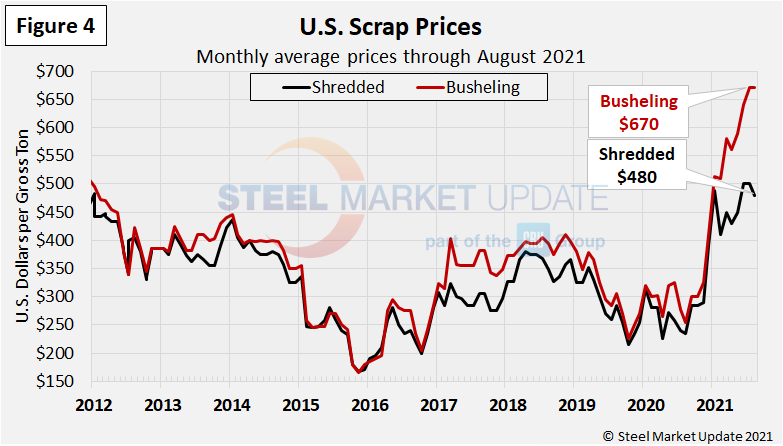
Figure 5 shows a similar uptrend in the prices of mill raw materials over the past year as the price of iron ore surpassed $200 per dry metric ton in May. Shredded scrap eased to $480 per gross ton in August, down 4% from the June/July peak.
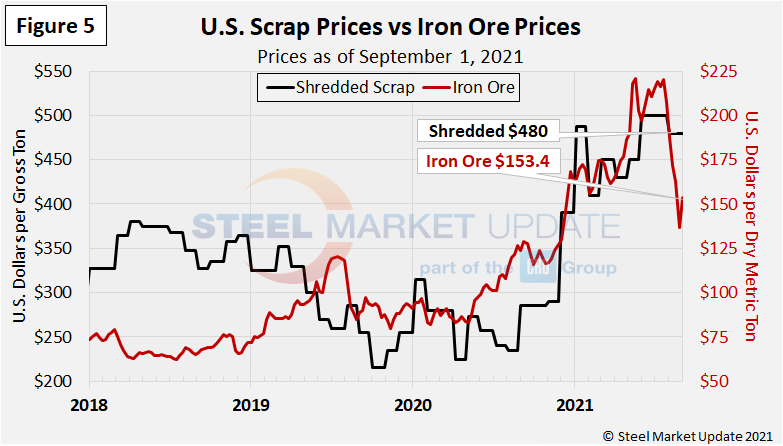
To compare the two, Steel Market Update divides the shredded scrap price by the iron ore price to calculate a ratio (Figure 6). A high ratio favors the integrated/BF producers, a lower ratio favors the minimill/EAF producers. At the current 3.13 ratio shown below, the cost advantage formerly held by minimills is lessening, nearing the four-year average ratio line in black. This ratio hit an all-time low of 1.86 in August 2020 (within SMU’s 12-year limited data history).
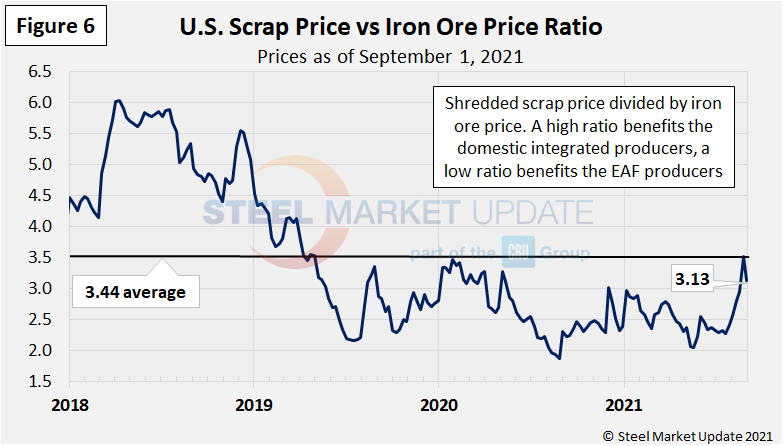
Figure 7 shows how the price of hot rolled steel generally tracks with the price of busheling scrap. Bush was flat from July to August, up $158 from the beginning of the year. Hot rolled prices continue to rise each week, with the latest SMU average at $1,935 per ton as of Aug. 31; this is up $75 per ton over the last month, up $925 per ton since the start of the year, and up $1,420 per ton over one year prior.
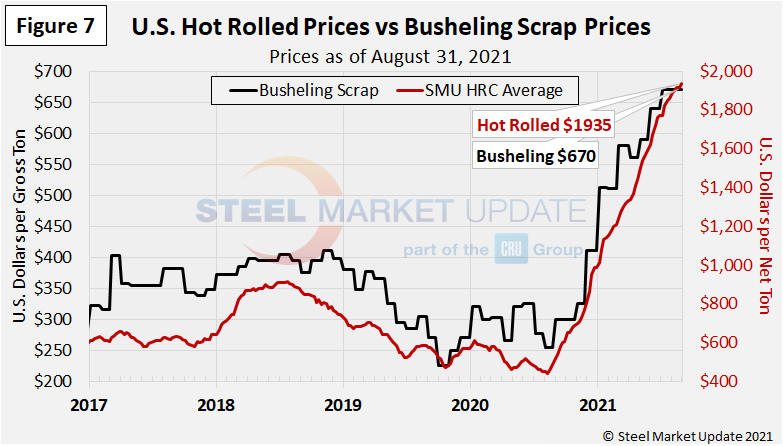
Zinc and Aluminum
Zinc, used to make galvanized and other products, has been on the rise since March 2020 and reached a multi-year high in early June (Figure 8). The LME cash price for zinc as of Sept. 1 is $1.3464 per pound, down 3% from the June 2 peak of $1.3883. The latest zinc price is down 2% from three months prior, up 17% from one year ago, and up 63% from the March 2020 low of $0.8236. The price of zinc factors into the coating extras charged by the mills for galvanized products.
Aluminum prices, which factor into the price of Galvalume, have been trending upwards since May 2020. Aluminum prices reached a record high of $1.2357 per pound as of Aug. 31, the highest daily price seen in over 10 years (note that aluminum prices often have large swings and return to typical levels within a few days, as seen in the graphic below, and we do not consider those surges in our overall high/low comparisons). The latest LME cash price of aluminum is $1.2225 per pound as of Sept. 1, up 12% over three months ago and up 52% over one year prior.
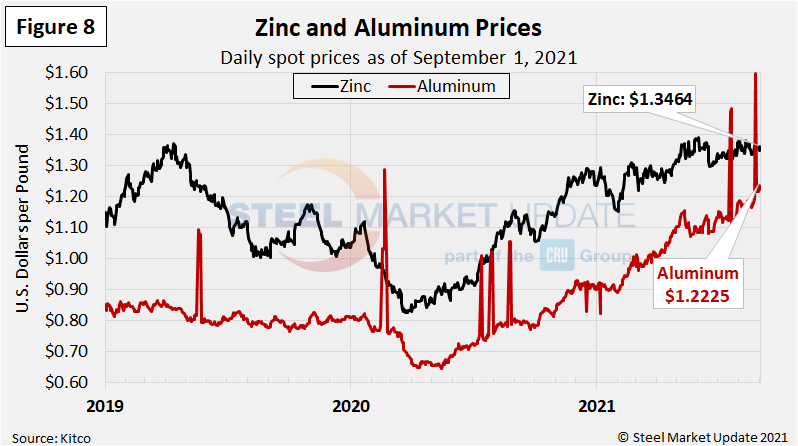
By Brett Linton, Brett@SteelMarketUpdate.com

Brett Linton
Read more from Brett LintonLatest in Steel Products Prices North America

Nucor slows HRC price climb with $5/ton increase
After eight weeks of double-digit price increases on hot-rolled (HR) coil, Nucor slowed the price rise this week with an increase of $5 per short ton.

Domestic CRC prices surge ahead of imports
The price spread between stateside-produced CR and imports reached its widest margin in over a year.

Evraz raises plate prices $160/ton
Evraz North America (NA) has followed Nucor and SSAB with a plate price increase of its own: up $160 per short ton (st). The increase was effective immediately for all new orders of carbon, high-strength low-alloy, and normalized and quenched-and-tempered plate products, as well as for hot-rolled coil, the steelmaker said in a letter to […]

Nucor lifts HR coil to $820/ton
Nucor has increased its consumer spot price (CSP) for hot-rolled (HR) coil for a fourth consecutive week.

Nucor pushes HR spot price to $790/ton
Nucor increased its consumer spot price (CSP) for hot-rolled (HR) coil to $790 per short ton (st) on Monday, Feb. 10 – a $15/st bump vs. last week. The Charlotte, N.C.-based company has raised its weekly CSP by $40/st over the past three weeks after maintaining tags at $750/st since Nov. 12, according to SMU’s […]
